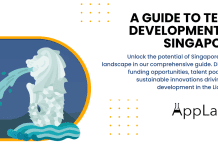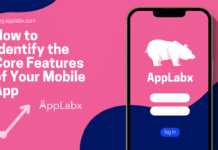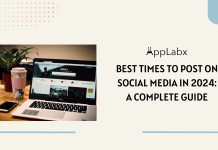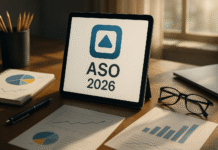Key Takeaways
- Product demos showcase key features and benefits, helping potential customers understand how your product solves their problems.
- Effective demos are tailored, engaging, and interactive, focusing on the audience’s pain points rather than just listing features.
- Avoid common mistakes like overloading with details or lacking a clear CTA, and ensure a seamless, well-structured presentation.
In today’s competitive business landscape, companies must go beyond traditional marketing strategies to capture customer interest and drive conversions.
One of the most powerful ways to showcase the value of a product is through an engaging and well-structured product demo.
Whether a company sells software, digital tools, or physical products, product demonstrations play a crucial role in persuading potential customers and closing sales.

A product demo is a detailed presentation or walkthrough that highlights a product’s features, functionalities, and real-world applications. It serves as a bridge between a potential customer’s curiosity and their decision to purchase.
Unlike static marketing materials, such as brochures or landing pages, a well-executed demo provides an interactive and immersive experience, allowing prospects to see the product in action and understand how it addresses their specific needs.
For businesses, an effective product demo can mean the difference between a lost lead and a loyal customer. Studies have shown that potential buyers are more likely to convert when they experience a hands-on demonstration rather than just reading about a product’s features.
This is particularly true for complex products like SaaS (Software as a Service) tools, high-tech gadgets, and enterprise solutions, where customers may struggle to understand the value without a live or recorded demonstration.
The Role of Product Demos in Modern Marketing and Sales
The digital transformation of sales has changed the way businesses interact with customers. With the rise of virtual selling and remote customer engagement, product demos have evolved from in-person presentations to highly dynamic, digital-first experiences. Companies now leverage live demos, pre-recorded videos, and interactive walkthroughs to engage their target audience.
A compelling product demo serves multiple purposes:
- Educates potential customers – It provides a clear and concise explanation of how the product works.
- Builds trust and credibility – A well-structured demo reassures prospects that the product delivers on its promises.
- Showcases key features and benefits – Instead of listing technical specifications, a demo brings features to life with real-world examples.
- Increases conversions and sales – By eliminating doubts and answering questions upfront, product demos accelerate the buyer’s journey.
- Differentiates from competitors – A strong demo can highlight unique selling points (USPs) that set a product apart from alternatives in the market.
Why Businesses Need to Master Product Demos
Despite their importance, many businesses struggle to create product demos that truly engage their audience. Common mistakes include overly technical explanations, lengthy and unstructured presentations, or failing to connect with the customer’s pain points. A poorly executed demo can have the opposite effect—causing confusion, skepticism, or even disinterest in the product.
To maximize the impact of a demo, companies need a strategic approach. This includes:
- Understanding the audience – Tailoring the demo based on customer personas and their specific needs.
- Structuring the demo effectively – Creating a logical flow that captures attention and keeps the viewer engaged.
- Using storytelling and real-world scenarios – Making the demo relatable by demonstrating how the product solves real problems.
- Keeping it concise yet informative – Delivering value in a short timeframe without overwhelming the audience.
- Providing a clear call to action (CTA) – Encouraging viewers to take the next step, whether it’s signing up for a trial or making a purchase.
What You’ll Learn in This Guide
This comprehensive guide will explore what product demos are, their different types, and how to create them effectively. Whether you are a startup looking to pitch investors, a SaaS company demonstrating software features, or an eCommerce brand showcasing a new product, this blog will provide actionable insights to help you craft a compelling product demo.
By the end of this article, you will learn:
- The definition and significance of product demos
- The different types of product demos and their best use cases
- A step-by-step process to create an effective product demo
- The best tools and platforms for recording or presenting demos
- Common pitfalls to avoid when delivering product demonstrations
With the right approach, a product demo can become a powerful sales and marketing tool that drives engagement, increases conversions, and builds long-term customer relationships. Let’s dive deeper into the world of product demos and discover how to create them effectively.
But, before we venture further, we like to share who we are and what we do.
About AppLabx
From developing a solid marketing plan to creating compelling content, optimizing for search engines, leveraging social media, and utilizing paid advertising, AppLabx offers a comprehensive suite of digital marketing services designed to drive growth and profitability for your business.
AppLabx is well known for helping companies and startups use SEO to drive web traffic to their websites and web apps.
At AppLabx, we understand that no two businesses are alike. That’s why we take a personalized approach to every project, working closely with our clients to understand their unique needs and goals, and developing customized strategies to help them achieve success.
If you need a digital consultation, then send in an inquiry here.
What are Product Demos and How to Create Them Effectively
- What is a Product Demo?
- Types of Product Demos
- How to Create an Effective Product Demo
- Common Mistakes to Avoid in Product Demos
1. What is a Product Demo?
A product demo is a presentation or walkthrough designed to showcase a product’s features, functionality, and benefits to potential customers, investors, or stakeholders. The primary goal of a product demo is to demonstrate how the product solves a specific problem and why it is the best choice compared to alternatives in the market.
Whether live, recorded, or interactive, product demos play a critical role in influencing purchasing decisions, helping businesses build credibility, and accelerating the sales process. When executed effectively, a product demo not only explains how a product works but also highlights real-world use cases, success stories, and unique selling points (USPs) that make it stand out.
Understanding the Concept of Product Demos
Definition of a Product Demo
A product demo is a structured presentation that illustrates how a product functions in real-time or through pre-recorded content. It can be delivered in various formats, including live demonstrations, video tutorials, interactive simulations, or guided walkthroughs.
- Purpose of a Product Demo:
- To educate potential buyers about the product’s key features and benefits.
- To showcase how the product works in real-world scenarios.
- To address customer pain points and demonstrate how the product provides solutions.
- To increase conversions by reducing doubts and answering questions before purchase.
- To differentiate the product from competitors by highlighting unique functionalities.
- Who Uses Product Demos?
- Sales and marketing teams to convert leads into customers.
- Customer success teams to onboard and educate new users.
- Investors and stakeholders to evaluate the product’s potential and market value.
- Potential customers to understand how the product fits their needs before purchasing.
How Product Demos Differ from Other Marketing Strategies
Unlike traditional marketing content like blog posts, advertisements, or brochures, product demos provide an interactive experience, allowing prospects to see the product in action.
| Feature | Product Demo | Marketing Brochure | Blog Post | Ad Campaign |
|---|---|---|---|---|
| Interactive | Yes | No | No | No |
| Shows Real-time Use | Yes | No | No | No |
| Addresses Customer Queries | Yes | No | No | No |
| Helps in Decision-Making | Yes | Limited | Limited | Limited |
A product demo is often the final step before a potential customer makes a decision. It bridges the gap between interest and conversion by providing tangible proof of the product’s value.
Why Are Product Demos Important?
1. Helps Customers Understand the Product
Many products, especially in B2B software, SaaS, and tech industries, can be complex. A demo simplifies the learning curve by offering a hands-on walkthrough.
Example:
- A CRM software company might offer a live demo to show how businesses can automate sales tracking, manage customer interactions, and generate reports—all in one platform.
2. Increases Customer Confidence
Potential buyers often hesitate to invest in a product without seeing how it works. A product demo eliminates uncertainty by providing a clear and transparent experience.
Example:
- An eCommerce brand selling a high-end kitchen appliance might use a pre-recorded demo video showcasing how the product functions, making customers more confident in their purchase decision.
3. Accelerates the Sales Process
A well-structured demo can shorten the sales cycle by answering key questions upfront, reducing back-and-forth communication between sales representatives and leads.
Example:
- A cybersecurity firm might use an interactive product demo to highlight how its security software detects and prevents cyber threats, convincing businesses to invest in the solution faster.
4. Differentiates a Product from Competitors
In competitive markets, simply listing product features is not enough. A product demo allows companies to demonstrate unique selling points (USPs), giving them an edge over competitors.
Example:
- A new AI-powered project management tool might offer a self-guided interactive demo, allowing potential customers to explore AI-driven task automation—something competing tools might lack.
Types of Product Demos
Product demos can take different forms depending on the audience, purpose, and industry. The most common types include:
1. Live Product Demos
A live product demo is a real-time presentation conducted via video conferencing, webinars, or in-person meetings. These demos are often interactive, allowing potential customers to ask questions and engage with the presenter.
- Best for:
- High-value SaaS or enterprise solutions requiring in-depth explanations.
- B2B companies looking to build relationships with prospects.
- Products that require custom demonstrations based on customer needs.
- Example:
- A B2B SaaS company like HubSpot might conduct a live demo for enterprise clients, walking them through CRM features tailored to their industry.
2. Pre-Recorded Product Demos
These are on-demand demo videos showcasing product features and workflows. Unlike live demos, pre-recorded demos allow prospects to watch at their convenience.
- Best for:
- Self-service SaaS platforms that need scalable customer onboarding.
- eCommerce businesses showcasing product usage.
- Digital marketing campaigns aimed at educating a broader audience.
- Example:
- A graphic design tool like Canva might create a pre-recorded demo showing how users can create social media posts in minutes using drag-and-drop features.
3. Interactive Product Demos
Interactive demos allow users to explore the product themselves through a guided simulation, offering a hands-on experience without needing to install or purchase the product.
- Best for:
- SaaS companies that want users to experience the product before signing up.
- Businesses aiming to reduce the need for live demos.
- Products with a learning curve that require guided exploration.
- Example:
- A no-code automation tool like Zapier might offer a self-guided interactive demo, letting users create workflow automations before committing to a plan.
Key Takeaways
- A product demo is a powerful sales and marketing tool that showcases a product’s features, functionality, and benefits in a real-world context.
- It educates customers, builds trust, accelerates sales, and differentiates a product from competitors.
- Product demos come in various formats—live, pre-recorded, and interactive—each serving different purposes depending on the target audience.
- Businesses must tailor their product demos based on customer needs, ensuring they are engaging, informative, and focused on solving real problems.
A well-crafted product demo can make all the difference between a potential customer walking away or making a purchase decision. In the next section, we will explore how businesses can create highly effective product demos that drive conversions.
2. Types of Product Demos
Product demos come in various formats, each designed to engage potential customers differently based on their needs, industry, and stage in the buying process. Choosing the right type of product demo is crucial for effectively showcasing a product’s features, benefits, and real-world applications.
Below are the main types of product demos, their benefits, best use cases, and real-world examples.
1. Live Product Demos
What is a Live Product Demo?
A live product demo is a real-time presentation of a product conducted via video conferencing, webinars, or in-person meetings. These demos allow businesses to engage with prospects, answer their questions, and customize the presentation based on the audience’s needs.
Key Benefits of Live Demos
- Personalized Experience – Sales teams can tailor the demo to address specific customer pain points.
- Real-Time Interaction – Viewers can ask questions and receive immediate responses.
- Higher Engagement – The interactive nature keeps prospects interested and involved.
- Stronger Sales Conversions – A direct conversation increases trust and helps close deals faster.
Best Use Cases for Live Demos
- SaaS companies showcasing software functionality in detail.
- B2B businesses where sales teams need to build relationships with clients.
- Enterprise solutions requiring in-depth product explanations.
- High-ticket products where personalized walkthroughs help justify pricing.
Examples of Live Product Demos
- Salesforce – Conducts live product demos to walk potential clients through CRM software functionalities.
- HubSpot – Offers live sales demos where a product specialist provides a customized tour based on a prospect’s industry.
- Tesla – Hosts live in-store and online vehicle demos, allowing customers to see autopilot features in action.
2. Pre-Recorded Product Demos
What is a Pre-Recorded Product Demo?
A pre-recorded product demo is a video presentation that provides an overview of a product’s features and benefits. Unlike live demos, these videos are created once and can be shared with potential customers at any time.
Key Benefits of Pre-Recorded Demos
- Scalability – A single video can reach thousands of prospects without additional effort.
- On-Demand Access – Viewers can watch the demo at their convenience.
- Consistency – Ensures all prospects receive the same high-quality presentation.
- Cost-Effective – Reduces the need for a dedicated sales team to conduct every demo.
Best Use Cases for Pre-Recorded Demos
- Self-service SaaS platforms looking to provide easy onboarding.
- E-commerce brands showcasing product features and usage.
- Tech startups explaining complex features without requiring live sessions.
- Businesses running email marketing campaigns that include demo links.
Examples of Pre-Recorded Product Demos
- Canva – Provides pre-recorded video tutorials on how to create designs using its drag-and-drop features.
- Apple – Offers pre-recorded product demos showcasing new iPhone and Mac features on launch days.
- Grammarly – Uses pre-recorded walkthroughs to show how its AI-powered writing assistant works.
3. Interactive Product Demos
What is an Interactive Product Demo?
An interactive product demo allows users to explore the product themselves through a guided simulation or self-paced experience. Unlike traditional demos, interactive demos let potential customers engage with key features before purchasing.
Key Benefits of Interactive Demos
- Hands-On Experience – Users can try out product features without committing to a full purchase.
- Higher Engagement – Interactive elements keep users interested longer.
- Accelerates Customer Education – Helps prospects learn by doing rather than watching.
- Eliminates the Need for Live Demos – Reduces dependency on sales teams for initial engagement.
Best Use Cases for Interactive Demos
- SaaS companies allowing prospects to explore software interfaces.
- B2B businesses with complex solutions that require hands-on experience.
- Mobile apps that provide interactive onboarding experiences.
- E-learning platforms showcasing course previews.
Examples of Interactive Product Demos
- Zapier – Offers an interactive tour where users can simulate creating automated workflows.
- Figma – Provides an interactive demo allowing users to explore design and prototyping features.
- Notion – Uses interactive tutorials to guide users through note-taking and project management features.
4. Webinar Product Demos
What is a Webinar Product Demo?
A webinar product demo is a scheduled online event where a company presents its product to a broad audience. These demos are usually hosted by product experts and often include a Q&A session.
Key Benefits of Webinar Demos
- Reaches a Large Audience – Webinars can engage hundreds or thousands of prospects at once.
- Provides Expert Insights – Hosted by product specialists or industry leaders.
- Encourages Engagement – Q&A sessions allow prospects to interact and clarify doubts.
- Boosts Brand Authority – Demonstrates expertise and builds credibility in the market.
Best Use Cases for Webinar Demos
- Tech companies launching new software updates.
- Enterprise solutions requiring in-depth feature explanations.
- Marketing and automation platforms demonstrating integrations.
- Companies using thought leadership to attract potential buyers.
Examples of Webinar Product Demos
- Adobe – Conducts live webinars to demonstrate new Photoshop and Illustrator features.
- HubSpot – Hosts marketing automation webinars showing how businesses can streamline workflows.
- Google Cloud – Uses webinar demos to showcase cloud computing solutions to enterprise clients.
5. One-on-One Product Demos
What is a One-on-One Product Demo?
A one-on-one product demo is a private demonstration conducted between a sales representative and a potential customer. These demos are highly personalized and focus on the specific needs of the prospect.
Key Benefits of One-on-One Demos
- Highly Customized Experience – Tailored to the prospect’s business requirements.
- Stronger Relationship Building – Creates a more personal connection with the customer.
- Addresses Specific Pain Points – Allows sales reps to focus on the prospect’s unique challenges.
- Higher Conversion Potential – Personalized demos often result in higher close rates.
Best Use Cases for One-on-One Demos
- Enterprise software providers requiring tailored walkthroughs.
- B2B companies selling high-value services or solutions.
- Luxury brands offering personalized consultations.
- Freelancers and consultants showcasing services to potential clients.
Examples of One-on-One Product Demos
- Salesforce – Conducts personalized CRM demonstrations for enterprise clients.
- Shopify Plus – Provides one-on-one sales demos for high-revenue eCommerce businesses.
- Tesla – Offers private test drives and detailed vehicle demonstrations.
Key Takeaways
- Live demos are great for engagement and real-time interaction but require scheduling.
- Pre-recorded demos provide scalability and convenience but lack interactivity.
- Interactive demos offer a hands-on experience, increasing user engagement and retention.
- Webinar demos allow companies to educate a large audience while fostering engagement.
- One-on-one demos provide highly personalized experiences, ideal for high-ticket sales.
By choosing the right type of product demo based on the target audience, product complexity, and business goals, companies can maximize engagement, increase conversions, and enhance the overall customer experience.
3. How to Create an Effective Product Demo
A well-structured product demo is one of the most powerful tools for showcasing your product’s features, benefits, and real-world applications. It can make the difference between a potential customer walking away or deciding to make a purchase.
To create an effective product demo, you need a strategic approach that focuses on customer pain points, storytelling, and clear value propositions. This guide covers a step-by-step process to craft a compelling product demo that converts.
1. Understand Your Audience
Why Audience Research is Crucial
A one-size-fits-all approach rarely works in product demos. Understanding your audience ensures that the demo addresses their specific needs, pain points, and expectations.
Steps to Identify Your Target Audience
- Define the ideal customer profile (ICP)
- Identify industry, company size, and demographics.
- Consider job roles (e.g., CEOs, marketers, developers) and their pain points.
- Segment your audience
- Are they first-time users or experienced professionals?
- Do they need a high-level overview or an in-depth technical walkthrough?
- Analyze common objections
- What are the main concerns that prevent prospects from buying?
- How does your product overcome these concerns?
Example
- A B2B SaaS company might create different demos for enterprise clients vs. small businesses. Enterprises may need an in-depth walkthrough of integrations, while small businesses might want a simple overview of the core features.
2. Define the Core Message and Value Proposition
Why Clarity is Essential
Your demo should quickly communicate why your product matters. Instead of listing features, focus on how your product solves problems and improves the user’s workflow.
How to Craft a Strong Value Proposition
- Identify the main pain points your product solves
- Example: “Are you struggling with managing multiple social media accounts? Our tool automates scheduling in one dashboard.”
- Use customer-centric messaging
- Instead of: “Our tool has AI-powered automation.”
- Say: “Save hours every week with AI automation that schedules your content for you.”
- Highlight unique selling points (USPs)
- What makes your product better than competitors?
- Example: “Unlike other tools, we offer unlimited cloud storage at no extra cost.”
Example
- A project management tool like Asana might focus on:
- For remote teams: “Easily collaborate across time zones with real-time task updates.”
- For marketing teams: “Manage campaign deadlines and content approvals in one dashboard.”
3. Plan and Structure Your Demo
The Ideal Product Demo Flow
A well-structured demo follows a logical progression:
- Introduction & Agenda
- Briefly introduce yourself and set expectations.
- Example: “In the next 15 minutes, I’ll walk you through how our software can automate your accounting tasks.”
- Address the Problem First
- Show the challenge your audience faces before presenting the solution.
- Example: “Managing invoices manually is time-consuming and error-prone. Let’s see how automation can solve this.”
- Show the Core Features (Not All Features!)
- Focus on the most relevant features rather than overwhelming the audience.
- Example: If you’re demoing a CRM, highlight:
- Automated follow-ups.
- Lead scoring.
- Integration with email tools.
- Live Walkthrough or Hands-On Demo
- Show the product in action.
- Use real-world examples to make it relatable.
- Call to Action (CTA)
- Guide the audience on what to do next:
- “Start a free trial today.”
- “Book a 1-on-1 consultation for a custom demo.”
- Guide the audience on what to do next:
Example
- A cybersecurity company might structure a demo like this:
- Problem: “Data breaches are rising, and manual security checks are ineffective.”
- Solution: “Our AI-powered tool scans and blocks threats automatically.”
- Demo: Show how the AI identifies vulnerabilities in real-time.
- CTA: “Try our 14-day risk-free trial today.”
4. Make It Engaging and Interactive
Why Engagement Matters
A boring demo loses interest quickly. Engaging demos keep the audience active and invested in the process.
Ways to Increase Engagement
- Ask Questions
- Example: “How does your team currently handle task management?”
- Encourages dialogue instead of a one-sided presentation.
- Use Real-World Scenarios
- Example: Instead of just explaining a marketing automation tool, say:
- “Imagine you have a campaign launching next week. Let’s see how our tool schedules posts across social media automatically.”
- Example: Instead of just explaining a marketing automation tool, say:
- Offer Hands-On Experience
- For interactive demos, allow users to click and explore.
- Example: “Try adding a task yourself to see how our drag-and-drop feature works.”
- Incorporate Storytelling
- Use customer success stories to illustrate value.
- Example: “Company X reduced customer churn by 30% after switching to our software.”
Example
- A presentation software like Prezi could demonstrate how dynamic animations improve audience engagement instead of just listing features.
5. Keep It Concise and Avoid Information Overload
Why Simplicity is Key
Too much information can overwhelm prospects, leading to confusion instead of conversion.
Tips to Keep It Concise
- Stick to 3-5 key features instead of going through every option.
- Use visuals like infographics or screen recordings instead of long explanations.
- Time your demo properly
- Live demos: 15-30 minutes.
- Pre-recorded demos: 5-10 minutes.
- Interactive demos: Allow users to explore at their own pace.
Example
- Instead of explaining all 50 settings in a video editing software, highlight:
- How to cut and merge clips.
- Adding effects in one click.
- Exporting in multiple formats.
6. End with a Clear Call-to-Action (CTA)
Why a CTA is Critical
A strong CTA guides the next step, whether it’s signing up, booking a call, or starting a trial.
Best Practices for CTAs
- Use direct language
- Instead of “Learn more,” say “Start your free 7-day trial now.”
- Provide incentives
- Example: “Sign up today and get 20% off your first month.”
- Make it easy to take action
- Include clickable links in pre-recorded demos.
- Offer a “Book a Demo” button at the end of live sessions.
Example
- A B2B SaaS platform might end with:
- “Loved what you saw? Get full access with a 14-day free trial—no credit card needed.”
Key Takeaways
- Know your audience – Tailor the demo to their needs.
- Focus on value, not just features – Show how your product solves problems.
- Structure your demo effectively – Follow a logical flow to keep it engaging.
- Make it interactive – Ask questions, use storytelling, and offer hands-on experiences.
- Keep it concise – Highlight the most important features without overwhelming viewers.
- End with a strong CTA – Clearly guide the audience on what to do next.
A well-crafted product demo builds trust, educates potential customers, and drives conversions. By following these steps, businesses can create high-impact demos that leave a lasting impression and turn leads into loyal customers.
4. Common Mistakes to Avoid in Product Demos
A product demo is a crucial part of the sales process, allowing businesses to showcase their offerings and convince potential customers of their value. However, many product demos fail to convert prospects because of avoidable mistakes that reduce engagement, cause confusion, or fail to address customer pain points.
Below are the most common product demo mistakes, their impact, and how to avoid them.
1. Not Understanding the Audience
Why This is a Mistake
Failing to research and tailor the demo to the audience’s needs results in generic presentations that do not resonate. If your demo does not address specific pain points, your prospects will lose interest.
Common Audience-Related Mistakes
- Using a one-size-fits-all approach
- Example: Presenting the same demo to a small business owner and a corporate executive without adjusting for their different needs.
- Not asking discovery questions before the demo
- Example: Jumping straight into the product walkthrough without first understanding what problems the prospect is trying to solve.
- Focusing on features instead of benefits
- Example: “Our software has a multi-layered dashboard” instead of “Our dashboard helps you track and manage all projects in one place, reducing time spent on admin work.”
How to Avoid This Mistake
- Research your audience and segment them based on industry, company size, and pain points.
- Start with discovery questions like:
- “What challenges are you facing with your current solution?”
- “What are your top priorities in selecting a new tool?”
- Customize the demo by highlighting the most relevant features for each audience segment.
2. Overloading the Demo with Too Many Features
Why This is a Mistake
A demo should not be a full product tour. Overloading it with every possible feature results in:
- Information overload – Viewers get overwhelmed and tune out.
- Lack of focus – The most valuable features get lost in unnecessary details.
Common Feature-Related Mistakes
- Going through every feature, no matter how irrelevant
- Example: A marketing manager attending a CRM demo does not need an in-depth explanation of backend database functions.
- Not prioritizing the most impactful features
- Example: Spending 15 minutes explaining minor UI settings instead of showcasing automation tools that solve the customer’s biggest pain point.
How to Avoid This Mistake
- Identify 3-5 core features that provide immediate value to your audience.
- Use the problem-solution approach:
- Instead of saying, “We have feature X,” explain how it solves a real-world problem.
- Example: “Tracking customer interactions across multiple platforms is difficult. Our tool integrates email, chat, and social media into one dashboard for seamless tracking.”
- Allow prospects to ask about additional features if they are interested.
3. Talking Too Much Without Demonstrating
Why This is a Mistake
Many demos feel like a long lecture instead of an interactive experience. Talking too much without showing the product in action leads to:
- Lower engagement – Prospects get bored.
- Unclear product value – People need to see how a product works, not just hear about it.
Common Presentation Mistakes
- Too much explanation before showing the product
- Example: Spending 10 minutes on company history before even opening the product.
- Reading off a script without interaction
- Example: Giving a one-sided presentation without engaging the prospect.
How to Avoid This Mistake
- Start showing the product early in the demo (within the first few minutes).
- Use a story-driven approach:
- “Imagine you’re a marketing manager struggling with tracking campaign results. Let me show you how our dashboard simplifies this process in seconds.”
- Encourage prospect participation:
- Ask: “What would you like to see first?”
- Allow them to navigate the tool in an interactive demo.
4. Failing to Address Common Objections
Why This is a Mistake
Many demos focus on what works well but ignore potential concerns that prospects might have. Failing to address objections creates doubt and makes prospects hesitant to move forward.
Common Objection-Handling Mistakes
- Avoiding pricing discussions
- Example: “Let’s talk about pricing later” – customers want transparency.
- Not addressing competitor comparisons
- Example: “We don’t discuss competitors” – prospects will compare anyway, so provide a clear differentiation.
- Ignoring security and compliance concerns
- Example: SaaS companies failing to explain data security measures, which is a dealbreaker for enterprise clients.
How to Avoid This Mistake
- Be proactive in addressing common concerns:
- “You might be wondering how this compares to [competitor]. Here’s what makes us different.”
- Provide case studies of customers who had similar concerns but saw success after using your product.
- Offer trial periods or money-back guarantees to reduce risk.
5. Running a Demo with Technical Issues
Why This is a Mistake
A demo with technical glitches, slow loading times, or broken features can destroy credibility and frustrate potential customers.
Common Technical Mistakes
- Unprepared environment
- Example: Slow internet causes video buffering during a live demo.
- Software crashes or errors
- Example: A feature does not work as expected, leading to an awkward moment.
- Forgetting to mute notifications
- Example: Emails and Slack messages popping up during a screen share.
How to Avoid This Mistake
- Test everything beforehand – Check internet speed, login credentials, and software functionality.
- Have a backup plan – If a feature crashes, switch to a pre-recorded version to avoid dead air.
- Use a clean demo environment – Avoid messy desktops or confidential information appearing during screen shares.
6. Ending Without a Strong Call-to-Action (CTA)
Why This is a Mistake
If a prospect does not know what to do next, they might not take action after the demo. A weak or missing CTA results in lost sales opportunities.
Common CTA Mistakes
- Ending with no clear next step
- Example: “That’s the demo. Thanks for your time!” – This leaves prospects wondering what to do next.
- Not providing an easy sign-up option
- Example: “Let us know if you’re interested” instead of a clear CTA like “Start your free trial today.”
How to Avoid This Mistake
- End with a strong and clear CTA, such as:
- “Click here to start your free trial.”
- “Schedule a follow-up call to discuss implementation.”
- Offer incentives to act now, such as discounts for signing up within 24 hours.
- Follow up within 24-48 hours to answer any additional questions.
Key Takeaways
- Know your audience – Avoid generic demos by tailoring presentations to specific pain points.
- Show, don’t just tell – Engage prospects by demonstrating features in action.
- Keep it focused – Prioritize the most valuable features instead of overwhelming viewers.
- Address objections upfront – Proactively tackle concerns about pricing, security, or competitors.
- Ensure technical readiness – Avoid glitches by testing software and internet connections beforehand.
- End with a strong CTA – Guide prospects to take the next step, whether it’s signing up, booking a call, or starting a free trial.
By avoiding these common mistakes, businesses can create engaging, high-converting product demos that leave a lasting impact and drive sales.
Conclusion
A well-executed product demo is one of the most powerful tools for converting prospects into loyal customers. Whether you are showcasing a software application, a physical product, or a complex enterprise solution, a great demo helps potential buyers see the value, experience the benefits, and build confidence in their purchasing decision.
However, not all product demos deliver results. Many fail due to lack of audience understanding, information overload, technical issues, or weak storytelling. By following the best practices outlined in this guide, businesses can transform their product demos from uninspiring walkthroughs into engaging, high-impact presentations that drive conversions.
Key Takeaways for Creating Effective Product Demos
To recap, let’s review the most important elements of a successful product demo:
1. Understand Your Audience
- Research your target customers and their unique pain points.
- Tailor the demo content based on the audience’s industry, role, and expertise level.
- Use real-world scenarios to make the product relevant to their specific needs.
2. Define a Strong Value Proposition
- Focus on benefits rather than just features—explain how your product solves a real problem.
- Differentiate from competitors by highlighting unique selling points (USPs).
- Use clear, simple language instead of complex technical jargon.
3. Structure the Demo for Maximum Engagement
- Follow a logical flow: Problem → Solution → Product Walkthrough → Call-to-Action.
- Avoid information overload by focusing on 3-5 core features that provide immediate value.
- Make the demo interactive by encouraging questions and hands-on participation.
4. Use Storytelling and Real-World Use Cases
- Create relatable scenarios where your product solves a customer’s problem.
- Show success stories of existing customers who have benefited from the product.
- Incorporate live demonstrations rather than just static presentations.
5. Keep the Demo Concise and Engaging
- Live demos should be 15-30 minutes, while pre-recorded demos should be 5-10 minutes.
- Use visuals, screen recordings, and animations to make explanations clearer.
- Avoid spending too much time on minor details—focus on the features that matter most.
6. Address Common Concerns and Objections
- Be proactive in answering pricing concerns, integration challenges, and security questions.
- Show how your product compares to competitors in terms of ease of use, cost-effectiveness, and features.
- Offer a trial, money-back guarantee, or demo version to reduce hesitation.
7. Avoid Common Product Demo Mistakes
- Don’t rely on a one-size-fits-all demo—customization is key.
- Avoid overloading prospects with too many features and unnecessary details.
- Ensure your demo environment is technically flawless to prevent glitches or slowdowns.
- Always end with a clear and compelling Call-to-Action (CTA).
The Power of an Effective Product Demo
An effective product demo does more than just explain features—it builds trust, showcases real-world impact, and persuades customers to take action. It creates a memorable experience that sticks with potential buyers and gives them confidence in your product.
How a Great Demo Impacts Sales and Customer Acquisition:
- Shortens the sales cycle – When prospects clearly see the value, they move through the decision-making process faster.
- Increases conversions – A compelling demo can be the tipping point for hesitant buyers.
- Builds stronger relationships – Engaging, interactive demos make prospects feel heard and understood.
- Enhances product adoption – Well-structured demos ensure customers understand how to use the product effectively, reducing churn.
Final Thoughts: Elevate Your Product Demos to Drive Business Growth
In today’s competitive market, a great product alone is not enough—how you present it determines whether people buy it or move on to a competitor. A strong product demo can be a game-changer, influencing purchase decisions and setting your business apart.
By implementing the strategies covered in this guide—understanding your audience, structuring your demo effectively, using storytelling, addressing objections, and avoiding common mistakes—you can create high-impact demos that not only capture attention but also convert leads into paying customers.
No matter the industry or product type, a well-planned and engaging product demo can be a powerful tool for business growth. Keep refining your demo strategy, test what works best for your audience, and always aim for clear, engaging, and customer-focused presentations.
Now it’s your turn—apply these insights and start delivering product demos that truly make an impact.
If you are looking for a top-class digital marketer, then book a free consultation slot here.
If you find this article useful, why not share it with your friends and business partners, and also leave a nice comment below?
We, at the AppLabx Research Team, strive to bring the latest and most meaningful data, guides, and statistics to your doorstep.
To get access to top-quality guides, click over to the AppLabx Blog.
People also ask
What is a product demo?
A product demo is a presentation that showcases how a product works, highlighting its features, benefits, and real-world applications to potential customers.
Why are product demos important?
Product demos help businesses engage prospects, demonstrate value, address objections, and drive sales by providing a hands-on experience of the product.
What are the different types of product demos?
Common types include live demos, recorded demos, interactive demos, personalized demos, and webinar-style demos, each catering to different audience needs.
How long should a product demo be?
An effective product demo should last between 15-30 minutes for live sessions and 5-10 minutes for recorded demos to maintain audience engagement.
What is the best format for a product demo?
The best format depends on the audience. Live demos are great for engagement, recorded demos for scalability, and interactive demos for hands-on experience.
How do you structure an effective product demo?
A good structure includes an introduction, problem identification, solution demonstration, key feature highlights, Q&A, and a strong call to action.
What are the key elements of a successful product demo?
Key elements include audience research, clear value proposition, engaging storytelling, interactive elements, and addressing objections proactively.
What common mistakes should you avoid in product demos?
Avoid generic presentations, overloading with features, technical issues, lack of engagement, skipping customer pain points, and weak CTAs.
How do you tailor a product demo to your audience?
Research your audience’s needs, customize messaging, focus on relevant features, use industry-specific examples, and encourage interaction.
How do you make a product demo engaging?
Use storytelling, live demonstrations, real-world examples, interactive Q&A, and focus on problem-solving rather than just listing features.
Should a product demo be scripted?
A demo should have a structured outline but remain flexible for interaction. Over-reliance on scripts can make the demo sound robotic and unengaging.
How do you handle technical issues during a live demo?
Always test beforehand, have a backup plan, use a stable internet connection, and prepare a pre-recorded demo in case of failures.
What should be included in a SaaS product demo?
A SaaS demo should cover usability, key features, integration capabilities, pricing, security, and customer success stories.
How do you create a product demo video?
Plan a script, record a clear and concise walkthrough, use visuals, add voice-over explanations, and edit for smooth transitions and branding.
What software can be used to create product demo videos?
Popular tools include Loom, Camtasia, ScreenFlow, DemoCreator, and OBS Studio for recording, editing, and sharing demo videos.
How can interactive product demos improve conversions?
Interactive demos let users experience the product hands-on, increasing engagement, building confidence, and boosting purchase intent.
What is the difference between a sales demo and a product demo?
A sales demo is more persuasive and tailored for closing deals, while a product demo focuses on educating users about features and functionality.
How do you follow up after a product demo?
Send a personalized email with key takeaways, additional resources, a free trial offer, and a call to action for the next step.
What role does storytelling play in a product demo?
Storytelling makes demos relatable, engaging, and memorable by framing features as solutions to real-world problems customers face.
How do you create a product demo for a new product?
Highlight unique features, demonstrate competitive advantages, use testimonials, and test the demo on a small audience for feedback.
Can product demos help reduce customer churn?
Yes, a well-executed demo ensures customers understand how to use the product effectively, increasing satisfaction and reducing churn.
How do you handle objections during a product demo?
Acknowledge concerns, provide real-world solutions, use customer success stories, and offer trial periods to mitigate hesitation.
What makes a good call-to-action (CTA) in a product demo?
A strong CTA should be clear, action-oriented, and time-sensitive, such as “Start your free trial today” or “Book a consultation now.”
When is the best time to conduct a product demo?
Product demos work best after a discovery call when the prospect has shown interest and needs a deeper understanding of the product.
Should product demos be recorded or live?
Both have advantages. Live demos allow for interaction, while recorded demos provide scalability and convenience for on-demand viewing.
What industries benefit most from product demos?
SaaS, B2B technology, healthcare, manufacturing, eCommerce, and financial services often use product demos to educate and convert customers.
How do you measure the success of a product demo?
Track metrics like engagement rates, demo-to-signup conversion rates, post-demo follow-ups, and customer feedback to assess effectiveness.
What should you do if a prospect loses interest during a demo?
Ask engaging questions, shift focus to their specific pain points, use interactive elements, and keep the demo concise and relevant.
How do you improve a poorly performing product demo?
Analyze feedback, refine the script, simplify explanations, add interactivity, and test new approaches with a different audience.




































